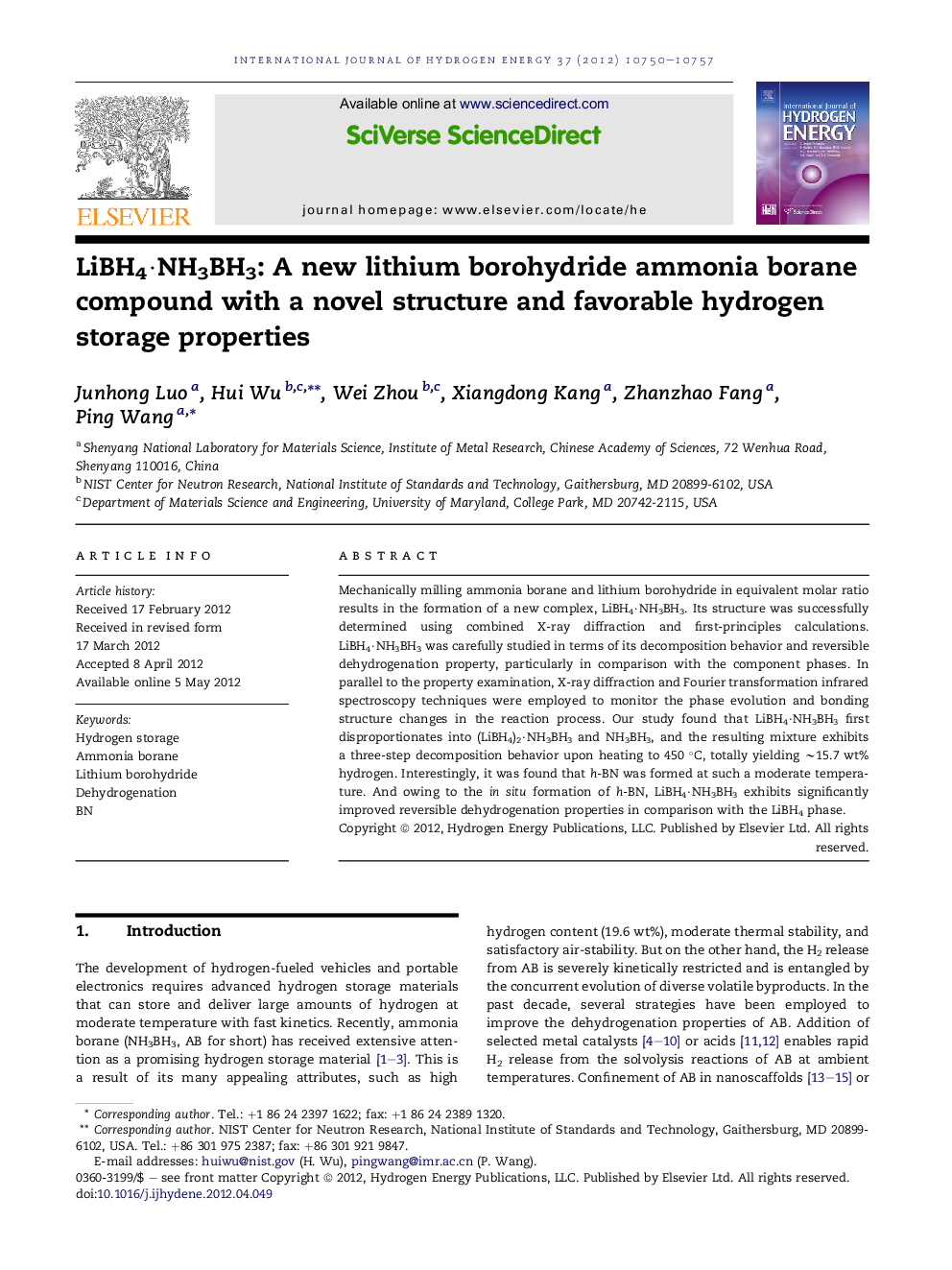| Article ID | Journal | Published Year | Pages | File Type |
|---|---|---|---|---|
| 1276357 | International Journal of Hydrogen Energy | 2012 | 8 Pages |
Mechanically milling ammonia borane and lithium borohydride in equivalent molar ratio results in the formation of a new complex, LiBH4·NH3BH3. Its structure was successfully determined using combined X-ray diffraction and first-principles calculations. LiBH4·NH3BH3 was carefully studied in terms of its decomposition behavior and reversible dehydrogenation property, particularly in comparison with the component phases. In parallel to the property examination, X-ray diffraction and Fourier transformation infrared spectroscopy techniques were employed to monitor the phase evolution and bonding structure changes in the reaction process. Our study found that LiBH4·NH3BH3 first disproportionates into (LiBH4)2·NH3BH3 and NH3BH3, and the resulting mixture exhibits a three-step decomposition behavior upon heating to 450 °C, totally yielding ∼15.7 wt% hydrogen. Interestingly, it was found that h-BN was formed at such a moderate temperature. And owing to the in situ formation of h-BN, LiBH4·NH3BH3 exhibits significantly improved reversible dehydrogenation properties in comparison with the LiBH4 phase.
► A new lithium borohydride ammonia borane compound, LiBH4·NH3BH3, is synthesized. ► The crystal structure of LiBH4·NH3BH3 is successfully determined. ► LiBH4·NH3BH3 can release ∼15.7 wt% hydrogen upon heating to 450 °C. ► LiBH4 can effectively promote the formation of h-BN from NH3BH3 at below 450 °C. ► The in situ formed h-BN can markedly improve the reversibility of LiBH4.
